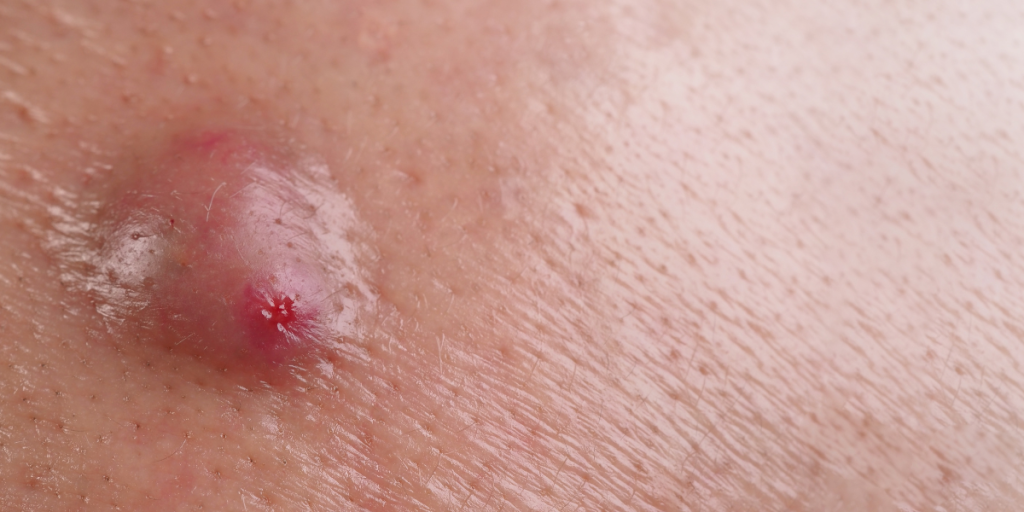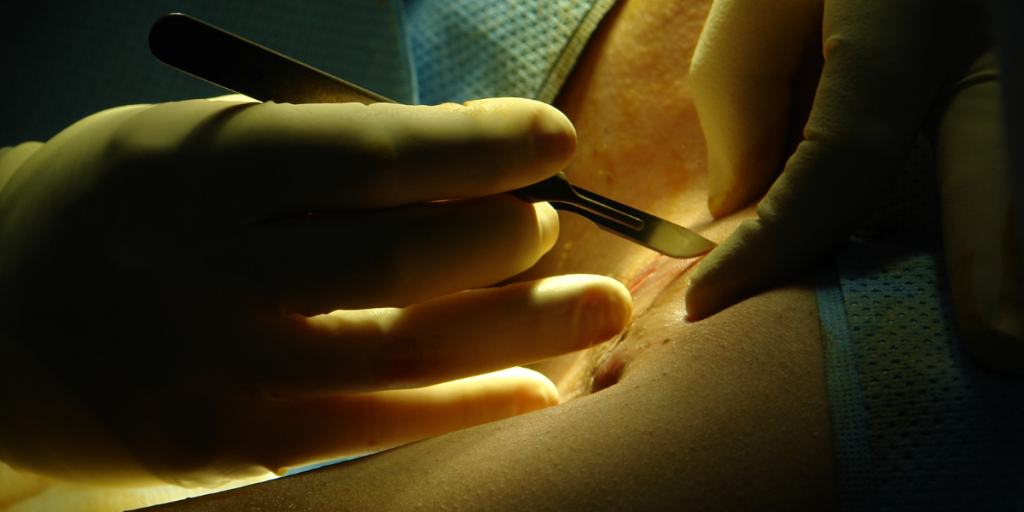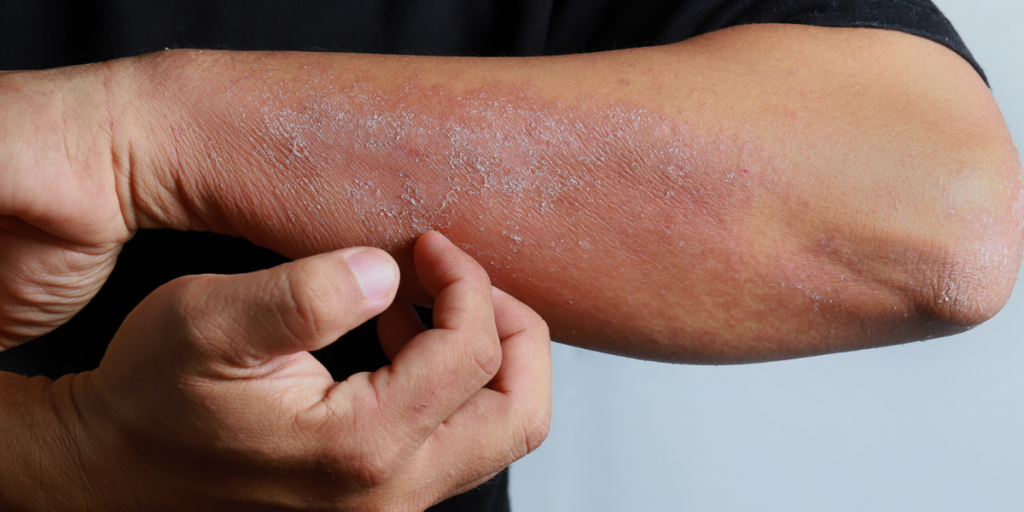“I thought it was just a pimple!”
What may initially look like a pimple may not be what it seems. It is because the ‘pimple’ continues to grow and worsen.
Next thing you know, you’re sitting in the ward waiting for your surgery. In this article, we will be covering the topic of skin abscesses.
What is a skin abscess?
The definition of an abscess is a painful collection of pus. Bacterial infections are the cause of these abscesses. So, we can divide the development of a skin abscess into stages.
These are mainly folliculitis, furuncles, and carbuncles.

How common are skin abscesses?
The exact incidence of skin abscesses is not known. However, skin abscesses are considered typical in our society. They are more common in middle-aged adults and older patients.
Skin abscesses are more common in males compared to females. In addition, individuals with existing risk factors are more likely to develop them.
Risk factors
The main risk factor involved is a compromised immune system. As a result, an affected individual is more susceptible to infections. But, one of the typical causes of a compromised immune system is uncontrolled diabetes.
With an increasing prevalence of diabetes, cases of skin abscesses are on the rise too.
There are also other causes of a compromised immune system. It includes:
- Older age
- HIV infection
- Cancer treatment
- Drugs for autoimmune diseases
- Blood conditions that affect your white blood cells

However, it is essential to note that skin abscesses can also occur in healthy people. Other risk factors for developing skin abscesses are:
- Poor personal hygiene
- Crowded living arrangements
- Hot and humid climates
- Pre-existing skin conditions
- Breaks in the skin (insect bites, cuts, injections, etc.)
How does a skin abscess form?
We can divide the different forms of skin abscesses into stages.
Folliculitis
The process starts with an infection of a hair follicle on the skin. The inflammation that follows is called folliculitis. This infection may happen at random.
However, many cases start with a simple break in the skin barrier. This break is caused by insect bites, cuts, and scratches, to name a few.
The Staphylococcus Aureus bacteria is the usual culprit of the infection. It is common to find bacterium on our skin. In normal circumstances, it is harmless and a part of our natural skin flora.
Furuncles (Boil)
If the infection of a hair follicle spreads deeper, the folliculitis progresses into a furuncle. A furuncle is commonly known as a boil.
It happens when the infection affects the surrounding tissue. Then, a collection of pus begins to develop around the hair follicle.
Carbuncle
If multiple hair follicles are affected, it is called a carbuncle. In other words, a carbuncle is a collection of numerous furuncles. The collection of pus generally connects under the skin.
A carbuncle signifies a worse skin infection. Therefore, these carbuncles are also associated with systemic symptoms.
Signs and symptoms
These skin abscesses are more common on the neck, breasts, face, back, thighs and buttocks. Again, the symptoms differ based on the stage of infection.
Folliculitis
- Irritation and redness around the hair follicle
- Some pus may be visible around the hair follicle
Furuncle (Boil)
- Painful red lump on the skin
- The lump is pus-filled– the ‘head’ on the lump
- A small opening (punctum) in the centre of the lump
- Pus may discharge spontaneously from the opening
Carbuncle
- Painful red bump on the skin
- Filled with pus with multiple ‘heads’
- Multiple small openings (punctum) located around the lump
- Systemic symptoms such as fever and fatigue
Fun facts
- There is a specific form of folliculitis called “hot-tub folliculitis”. It is associated with the use of pools and hot-tubs.
Water contaminated by the Pseudomonas Aeruginosa bacteria causes it. Contamination happens when such waters are not adequately chlorinated. - At times, MRSA bacteria infect these skin abscesses. Unfortunately, this super-bug is resistant to antibiotics.
This super-bug is the result of decades of improper usage of antibiotics. Use antibiotics responsibly and finish your courses as prescribed.
What is the difference between a skin abscess and a pimple?
A pimple and a boil may look similar. Both are pus-filled bumps, but they differ in many ways.
Firstly, pimples and acne are more common in adolescents and young adults. It differs from skin abscesses which affect middle-aged and older adults.
The different bacterium causes the two conditions. For example, Staphylococcus Aureus causes boils, while Cutibacterium Acnes causes pimples. The bacterium contributes to the formation of a pimple.
However, unlike boils, it is not a skin infection.
Next is the initial event in the development of the lump. Direct infection of the hair follicle leads to a boil. A pimple, however, starts with the clogging of a skin pore (opening of the follicle)
Lastly, they also differ in modes of treatment. We treat boils by draining them and providing antibiotics. We treat pimples by tackling the various factors that contribute to their formation.
How are skin abscesses diagnosed?
We diagnose skin abscesses clinically. It means that we generally do not require any special tests. Instead, the doctor would rely on your history and a physical examination of the affected area.
In some circumstances, the doctor may need to obtain samples of pus. It is to determine the exact bacteria that is causing the infection. Doing so can determine the specific antibiotics to treat your abscess. We can obtain the samples during a drainage procedure while treating the spot.
How are skin abscesses treated?
The treatment of skin abscesses depends on the stage of the bump. Other than that, we will also attend to the patient’s risk factors. It includes control of blood sugar levels in diabetic cases.
Folliculitis
Most cases of folliculitis would spontaneously resolve in a few days. However, maintenance of personal hygiene is essential in all cases.
Depending on the severity, the doctor may prescribe you an antibiotic cream. Another helpful modality is an antiseptic cleanser.

Furuncles (Boils)
We treat furuncles based on their severity. We use antibiotic creams for less severe furuncles. However, severe cases may require oral antibiotics instead.
We treat large furuncles by draining the pus. It is a procedure called Incision & Drainage (I&D). In most cases, we can perform it on the spot in an in-clinic setting. See the details below.
Doctors should drain all furuncles. For smaller furuncles, an alternative is the frequent application of a warm compress with wet towels. The warm compress promotes spontaneous drainage.
Carbuncle
In all carbuncle cases, you will require oral or intravenous antibiotics.
You will also require surgical drainage of the carbuncle. It is done either with an I&D or a dated procedure called saucerization.
Cases of carbuncles often require admission to the hospital. So, it is because the treatment procedure often requires an operating room.
Surgical procedures
Incision and drainage (I&D)
In this procedure, we use local anaesthesia to numb the surrounding area. Then, we would make a small incision on the top of the abscess.
We then proceed to drain all the pus from the abscess. If needed, we can take samples of the pus to the lab. Finally, before dressing the wound, we would clean wound by rinsing it.
We can immediately perform the I&D in the clinic in less severe furuncles.
Saucerisation
It is a conventional procedure dating back to when antibiotics were non-existent. The saucerization procedure is similar to I&D. However, we also surgically remove the affected tissue surrounding the lump.
It leaves a much larger wound that resembles the shape of a saucer. Removing the surrounding tissue is crucial in treating the infection.
This procedure is usually in an operating room. It usually requires patients to be put to sleep with general anaesthesia.
Saucerization results in a longer wound healing time compared to I&D. With the advancement of the medical field, I&D has superseded the practice of saucerization. Despite that, some centres still do perform the saucerization procedure.

Can I prevent skin abscesses?
Skin abscesses can develop in anyone, even healthy individuals. However, we can reduce the risk of developing them by reducing our risk factors.
Personal hygiene is vital for everyone to prevent various infections. It includes frequent hand washing, regular showers, trimming of nails, etc.
For patients with diabetes, control of blood sugar levels is crucial. It reduces the risk of various complications, including heart disease. Here are a few tips to improve your diabetic control.
- Diet modifications: reducing sugar and carbohydrate intake
- Staying compliant with your medications
- Frequent follow-ups with your doctor
- Exercising for at least 2.5 hours per week
- Weight loss
- Monitoring your blood glucose level at home
Patients with skin conditions such as eczema, hives, and sunburns are also at risk. Protection of your natural skin barrier is the key here.

Conclusion
Skin abscesses are common and can affect anyone. They may initially resemble a pimple, but they should be cautious.
References
- https://www.msdmanuals.com/professional/dermatologic-disorders/bacterial-skin-infections/folliculitis
- https://www.msdmanuals.com/professional/dermatologic-disorders/bacterial-skin-infections/furuncles-and-carbuncles
- https://www.msdmanuals.com/professional/dermatologic-disorders/bacterial-skin-infections/cutaneous-abscess
- https://jamanetwork.com/journals/jama/fullarticle/2677448
- https://www.ncbi.nlm.nih.gov/books/NBK556072/#:~:text=Incision%20and%20drainage%20(I%26D)%20is,or%20without%20adjunctive%20antibiotic%20therapy.
- https://www.ncbi.nlm.nih.gov/books/NBK513141/